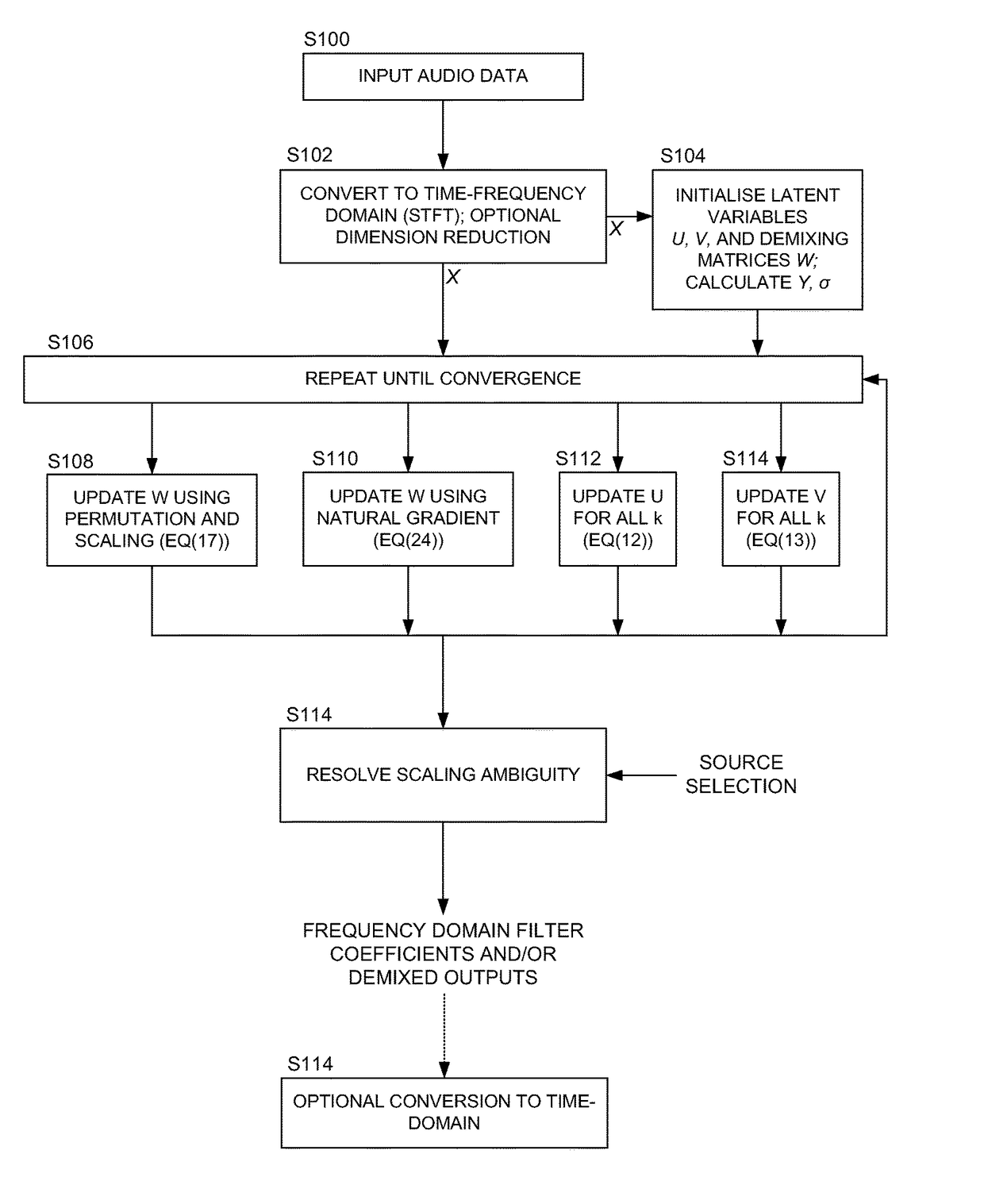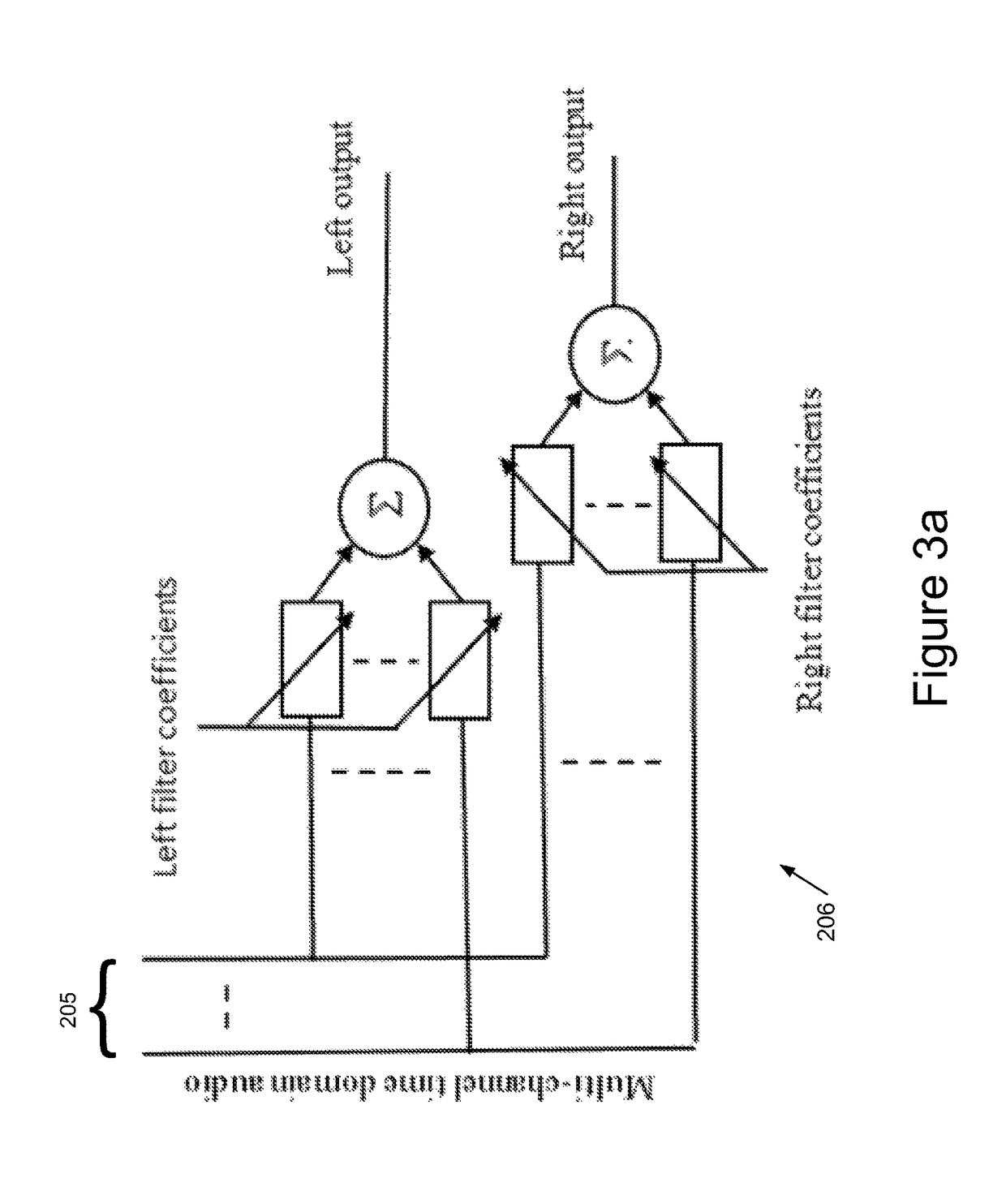Blind source separation systems
a source separation and source separation technology, applied in the field of blind source separation systems, can solve the problems of severe curtailment of people's ability to interact in normal social situations, difficulty in adjusting the position of the source, and difficulty in adjusting the position, so as to reduce the dimensionality of data, reduce the cost of rotation, and avoid the effect of being trapped in local maxima
- Summary
- Abstract
- Description
- Claims
- Application Information
AI Technical Summary
Benefits of technology
Problems solved by technology
Method used
Image
Examples
example implementations
[0201]Referring to FIG. 2, this shows the architecture of apparatus 200 to improve the audibility of an audio signal by blind source separation, employing time-domain filtering to provide low latency. The apparatus comprises a microphone array 202 with microphones 202a-n, coupled to a multi-channel analogue-to-digital converter 204. This provides a digitised multi-channel audio output 205 to a spatial filter 206 which may be implemented as a multi-channel linear convolutional filter, and to a filter coefficient determiner 208. The filter coefficient determiner 208 determines coefficients of a demixing filter which are applied by spatial filter 206 to extract audio from one (or more) selected sources for a demixed audio output 210. The filter determiner 208 accepts optional user input, for example to select a source, and has an output 212 comprising demixing filter coefficients for the selected source. The demixed audio 210 is provided to a digital-to-analogue converter 214 which pro...
PUM
 Login to View More
Login to View More Abstract
Description
Claims
Application Information
 Login to View More
Login to View More - R&D
- Intellectual Property
- Life Sciences
- Materials
- Tech Scout
- Unparalleled Data Quality
- Higher Quality Content
- 60% Fewer Hallucinations
Browse by: Latest US Patents, China's latest patents, Technical Efficacy Thesaurus, Application Domain, Technology Topic, Popular Technical Reports.
© 2025 PatSnap. All rights reserved.Legal|Privacy policy|Modern Slavery Act Transparency Statement|Sitemap|About US| Contact US: help@patsnap.com



